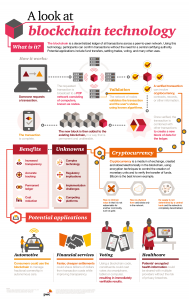Smart Trust: The Rise of Blockchain in Edge Computing, Part I

The new Amazon Key wants to kill traditional package delivery. Their drivers access your home with a special key and place your package inside. Compatible with Alexa and cloud-based, Key expands the Amazon IoT home system. Many people are saying “no, thanks” to this announcement. Vulnerabilities – physical access to the home by a stranger and camera footage transmitted to a cloud – worry consumers.

This release rippled the “trust economy,” which is the online-based, app-driven, shared and digital commerce lifestyles many people live. Its currency is personal data, such as credit cards, biometrics and usage statistics. Corporations need our personal data to accept us in their marketplaces, but promise to keep it safe in exchange.
In the past, word-of-mouth from neighbors influenced our perception of an institution or other provider. Transactions were driven by trusted authorities validating a commercial enterprise. Businesses, like hotels, were certified as safe and had ratings by consumer agencies. Now, strangers give reviews on AirBnB and Uber, and we trust their judgement.
Select fields, like real estate, have struggled to transition to digital processes. Some trust must be institutionalized due to its sensitive and financial nature. We still go through the appropriate agents to protect information and ensure the security of a deal. We must know the participants in our network to feel confidence. In short, the record keepers make the process trustworthy.
Those transitions have become more tenuous with new security vulnerabilities. The Equifax security breach, the growing use of bodily data and fake news bots have people anxious about a hackable world. Trusted partners and reviews mean less because they may be propped up by spam.
Questions of data security for this trust economy drive cloud computing. One form of technology leads that discussion: blockchain, made famous by Bitcoin, or distributed ledgers. Part II of this smart trust series will go through the technical details of blockchain. For now, it’s easiest to summarize blockchain as a secure, trustworthy process that makes the keepers safe too.
A relatively new technology, blockchain employs a complicated system of computing and storage to irreversibly and permanently store records, track reputations and enact transactions. It works in conjunction with other cybersecurity measures like encryption, limited access, and authorization to keep a network safe.
Blockchain has the potential to affect multiple disciplines, including those hard-to-digitize fields like contracts. Ongoing research especially seeks to address its feasibility for edge computing and IoT networks, where data is more vulnerable. Part III of our series will discuss current and future applications.
Learn More >>> Part II: The Rise of Blockchain in Edge Computing
Learn More >>> Part III: The Rise of Blockchain in Edge Computing
Categories:
